What Is Yarn-Dyed? Simple Guide To Lasting Fabric Color
Ever wondered why some striped shirts or detailed fabric patterns look so sharp and stay vibrant wash after wash? The secret often lies in a process called “yarn-dyeing.”
This guide simply explains what yarn-dyed means – coloring the threads before they become fabric – and why it’s a mark of quality for everything from your favorite clothes to premium brand labels.
1. What’s the big deal about yarn-dyed?
When you look at a fabric with crisp stripes or a detailed pattern, like a classic plaid shirt, you might wonder how those colors stay so clear and don’t fade away. Often, the answer is “yarn-dyed.”
Simply put, yarn-dyed means the yarns (the individual threads) are dyed to their specific color before they are woven or knitted into fabric. In this guide, we’ll cover what yarn-dyeing is, its benefits, and why it’s a key feature of high-quality products—from clothing to the detailed woven labels essential for branding. Understanding this process helps you recognize quality and make better choices for your brand.
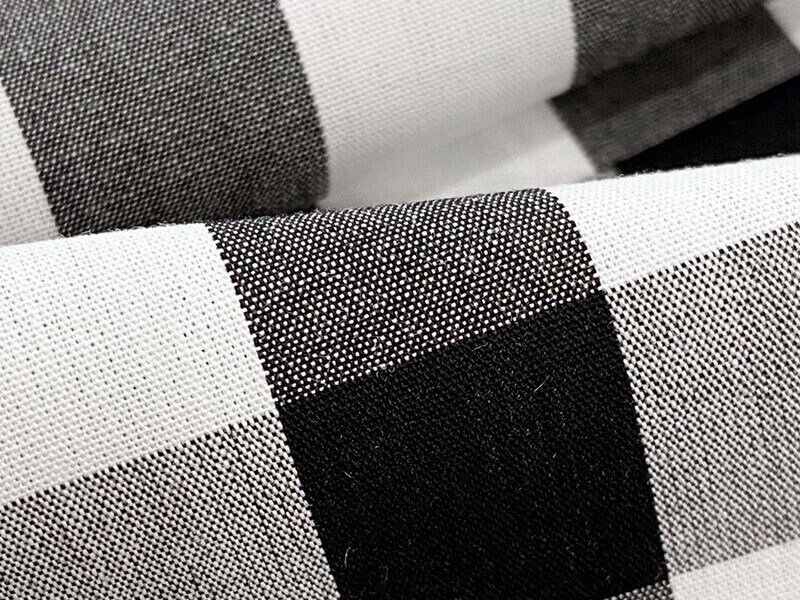
2. What exactly does “yarn-dyed” mean?
Yarn-dyed means that individual yarns, or threads, are dyed to the desired color before they are used to create the fabric. The color soaks deep into the core of each thread. This means the color is part of the yarn itself, not just a layer on top of a finished cloth.
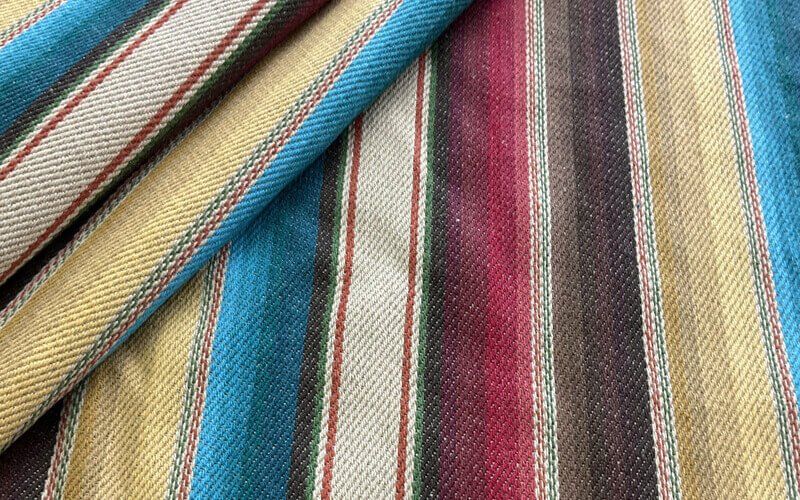
How is this different from other ways of coloring fabric?
- Piece-dyeing: This is when a whole roll of fabric is dyed after it’s been woven or knitted, usually to make solid-colored fabric. Imagine dipping a large white sheet into a bath of color.
- Garment-dyeing: This is when a finished item, like a t-shirt or a bag, is dyed after it’s been completely sewn together. Think of taking a ready-made white shirt and then coloring it.
The key difference is when the color is added. With yarn-dyeing, the color is there from the very beginning of the fabric-making process.
Think of it like building with LEGO bricks. Yarn-dyeing is like having LEGO bricks of many different colors (the dyed yarns) and building your design with them. The color is part of each brick. Other methods might be like building a model with all white bricks and then spray-painting the finished model; the color is only on the surface.
3. How is yarn dyed? A peek into the process
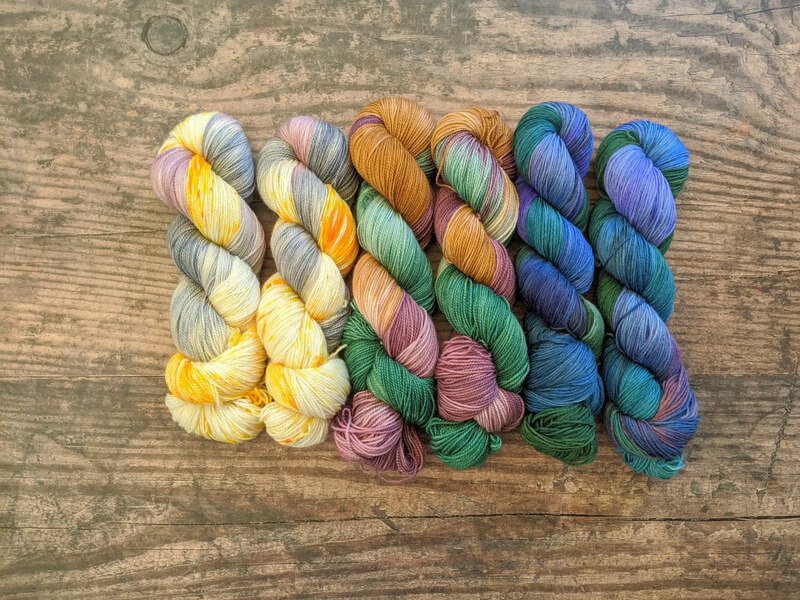
The magic of yarn-dyeing happens before any weaving or knitting begins. Here’s a simple look at the steps involved:
- Yarn preparation: The yarns, often on large spools or in loose bundles called hanks, are first cleaned. This removes any natural oils or dirt. Clean yarns absorb dye more evenly, ensuring a consistent color.
- Dyeing: The clean yarns are then placed into a special dye bath. Different types of yarn (like cotton or polyester) need different kinds of dyes, but the aim is always for the color to penetrate deep into the yarn fibers.
- Setting the dye: To make the color permanent and prevent it from washing out or fading easily, heat or special ‘dye helpers’ (chemicals that assist the dyeing process) are often used. This step locks the color into the yarn.
- Rinsing and drying: After dyeing, any extra dye that hasn’t bonded with the yarn is washed away. Then, the yarns are carefully dried, often in controlled temperature environments.
- Ready for fabric making: These beautifully colored yarns are now ready to be woven or knitted into fabrics with rich colors and intricate patterns.
The care taken during each step is crucial for the final product. For branding materials like woven labels, this precision ensures that colors are true and consistent across an entire order, maintaining brand integrity.
4. The bright side: Why yarn-dyed is great
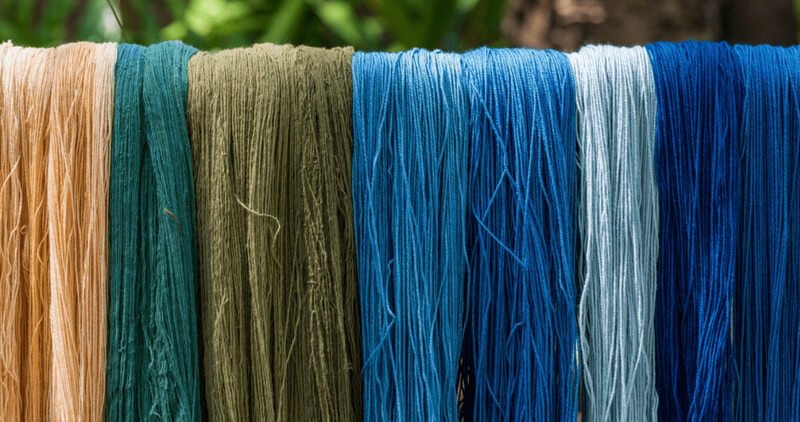
Yarn-dyed fabrics offer some wonderful benefits, making them a preferred choice for quality products.
4.1 Colors that wow and last
- Deep, rich, vibrant colors: Because the dye penetrates the entire thread, the color is incredibly deep and looks richer. It’s like a carrot being orange all the way through, not just painted orange on the outside.
- Excellent colorfastness: Colorfastness means the colors stay bright and don’t easily fade, bleed (run into other colors), or rub off when the fabric is washed, rubbed, or exposed to sunlight. Yarn-dyed fabrics are known for their superior colorfastness.
4.2 Patterns woven in, not printed on
- Sharp, clear patterns: This method is perfect for creating crisp stripes, checks (like gingham or plaid), and even more complex designs. Different colored threads are used to build the pattern directly into the fabric.
- Pattern is part of fabric structure: The design is literally part of the fabric’s construction. It won’t crack, peel, or wear away like a surface print might. If you look closely, you can often see the different colored threads making up the design, and the pattern typically looks good on both sides of the fabric.
4.3 Often a nicer feel
Sometimes, yarn-dyed fabrics can feel softer. This is because the fabric itself doesn’t undergo a harsh dyeing process after it’s made. The yarns are dyed more gently beforehand.
4.4 Great for quality labels
This process is ideal for branding, especially for custom woven labels. Using distinct, yarn-dyed threads allows for intricate logos and sharp, legible text. The colors stay vibrant through wear and washing, ensuring a brand’s image remains professional for the life of the product. This attention to detail can significantly elevate a brand’s perceived value.
5. Things to consider: Any downsides?
5.1 Can cost more
- Dyeing individual yarns is an extra step that happens before the fabric is even made. This process involves more planning, labor, and handling of materials.
- Manufacturers also need to predict color trends further in advance when dyeing yarn, which can add to the overall cost.
- As a result, yarn-dyed fabrics, and items like premium yarn-dyed woven labels, can be more expensive than options where the entire fabric is dyed at once (known as piece-dyeing).
5.2 Takes more time
- The complete process – dyeing the yarns, drying them, and then setting up weaving or knitting machines with all the different colored yarns – takes longer than quickly dyeing a large roll of ready-made fabric.
- This means if you’re ordering custom yarn-dyed items, such as specific labels from Packlove, it might take a bit longer to produce them compared to simpler, quicker methods. The MOQ (Minimum Order Quantity – the smallest number of units you can order) may also be a factor to consider due to the setup involved.
5.3 Less common for simple solid colors in mass production
- For producing very large quantities of fabric in a single solid color, it’s usually faster and more economical to piece-dye the fabric after it’s made.
- Yarn-dyeing for solid colors is typically reserved for very high-quality items where that deep, lasting color is a priority. However, for creating patterns, yarn-dyeing is often the best method to achieve sharp, durable results.
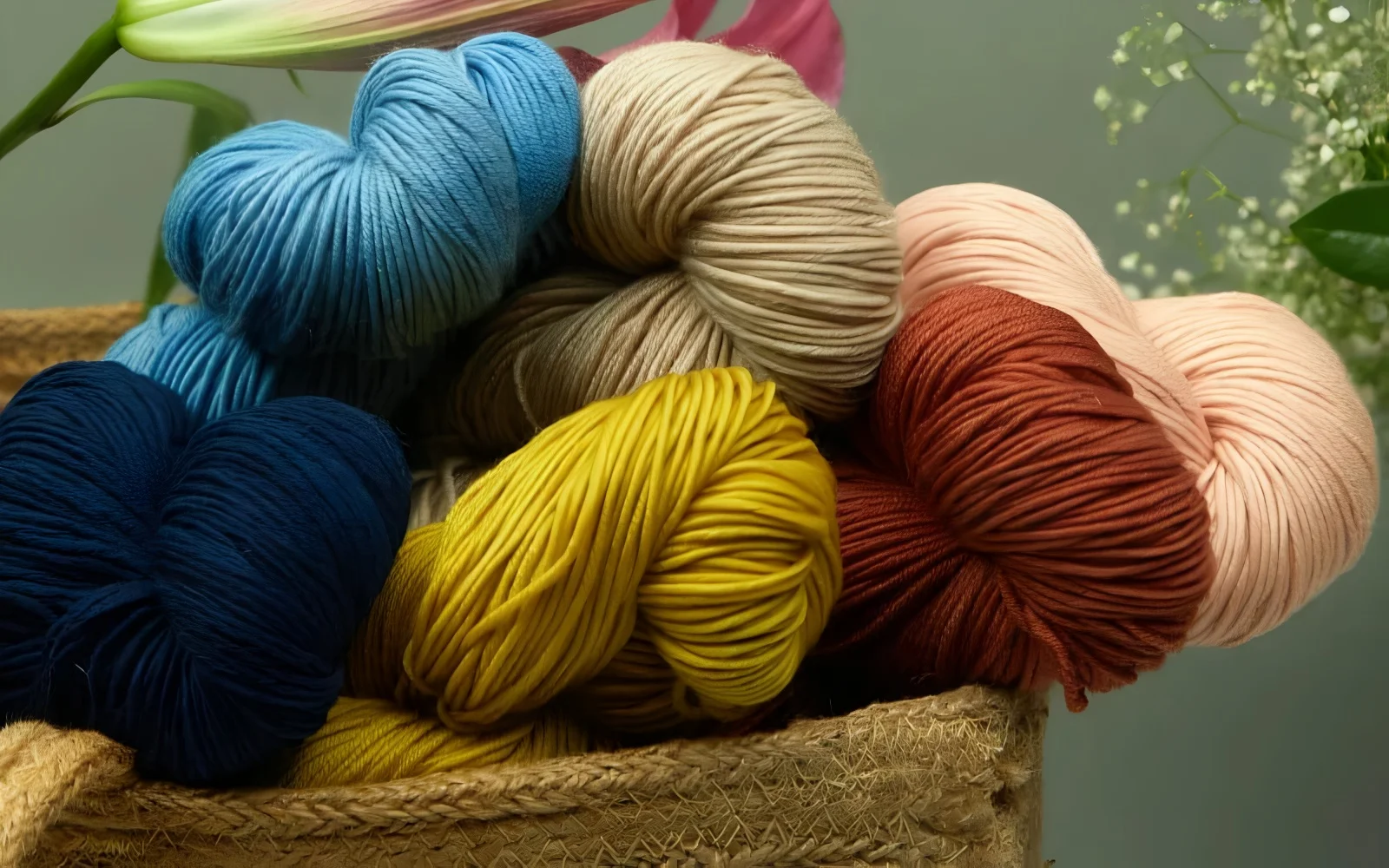
6. Yarn-dyed vs. other ways to color fabric
Understanding the main ways fabric gets its color can help you appreciate the differences. Here’s a simple comparison:
| Dyeing method | What is colored? | When it’s colored? | Best for | Simple analogy |
|---|---|---|---|---|
| Yarn-Dyed | Single yarns (threads) | Before yarns are made into fabric | Sharp patterns (stripes, plaids); deep, long-lasting color; high-quality feel; premium woven labels | Colors are “built into” the fabric |
| Piece-Dyed (Fabric-Dyed) | The whole roll of fabric | After fabric is woven or knitted | Solid, one-color fabrics; often faster and cheaper for large amounts of solid color fabric | Fabric is “dipped” in color |
| Garment-Dyed | The finished item (e.g., t-shirt) | After the item is fully made | Soft, slightly faded “lived-in” look; good for small batches or trying colors; unique, subtle variations | Finished item is “tumbled” in color |
For brands that prioritize a crisp, embedded design and lasting color in their labels, yarn-dyeing is the superior choice. This method ensures a brand’s identity is represented with the durability and quality it deserves, which is why it’s the standard for premium woven labels.
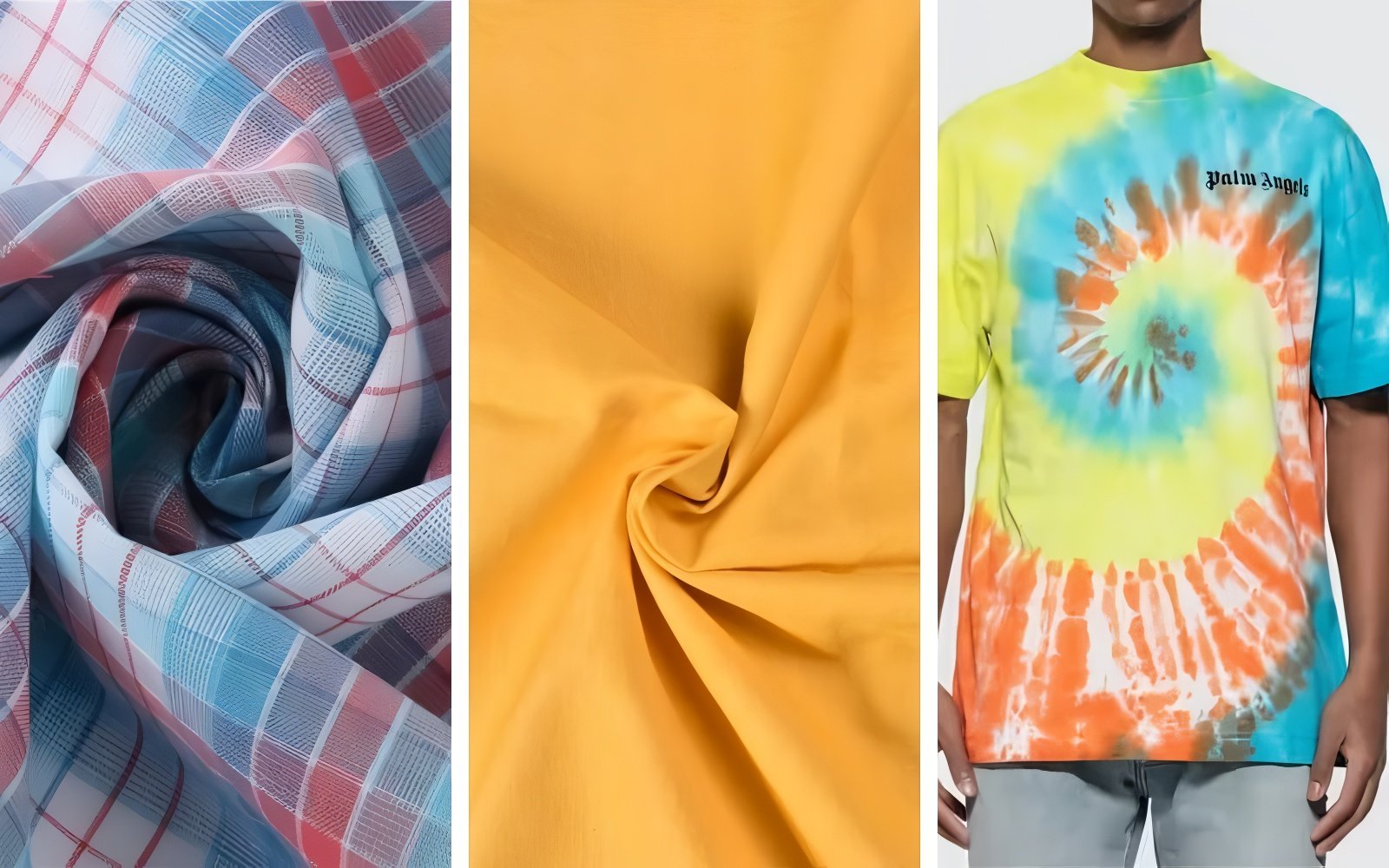
7. Where you’ll see yarn-dyed fabrics
7.1 Clothes
- Classic striped shirts (like Breton or sailor stripes)
- Plaid flannel shirts and cozy scarves
- Gingham (checkered pattern) dresses, shirts, or tablecloths
- Chambray shirts (often has a look similar to light denim, with colored warp threads and white weft threads)
- Many types of denim jeans (typically, the indigo blue threads are dyed before weaving, while the white threads are left undyed)
7.2 Home goods
- Striped or patterned bath towels and beach towels
- Upholstery fabric for sofas or chairs that have woven-in patterns
- Checkered or striped tablecloths, placemats, and napkins
7.3 On your favorite brands
- And very importantly for us at Packlove: high-quality woven labels on clothing, bags, hats, home textiles, and many other products!
- Think of those neat little labels with sharp brand logos, tiny, readable text, or intricate designs. Many of the best and most durable ones are yarn-dyed. This allows the colors to be bright and the details to be exceptionally clear and last a long time, representing the brand effectively.
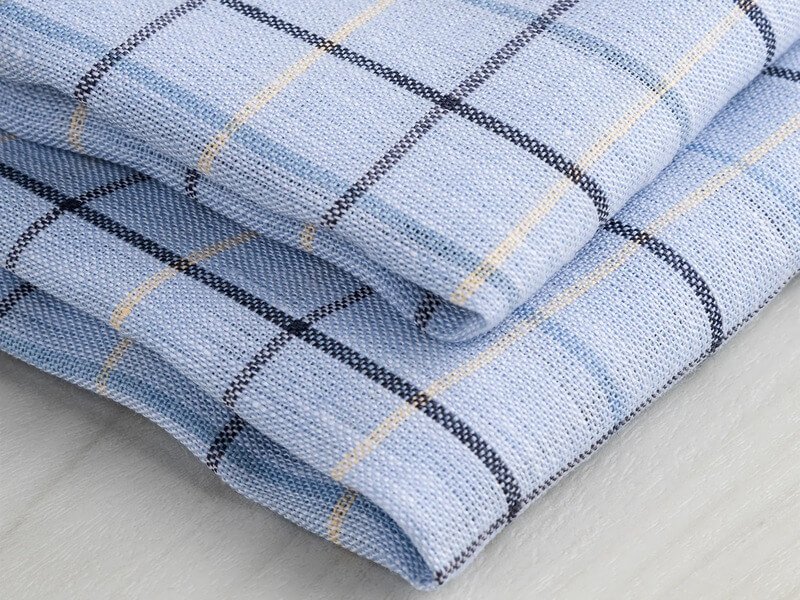
8. Yarn-dyed for your brand: thinking about custom woven labels
If you’re creating products, yarn-dyed woven labels are an excellent choice when:
- Your logo has fine details or multiple, distinct colors.
- A premium, professional look that boosts perceived value is your goal.
- Durability is critical to withstand frequent washing without fading.
- Accurate brand color matching is essential for consistency.
At Packlove, we specialize in creating custom woven labels using high-quality yarn-dyed threads to achieve a professional finish. For instance, polyester yarns offer great durability, while damask weaves are perfect for capturing superfine details. We’ve helped many brands create stunning labels that withstand the test of time, perfectly reflecting their commitment to quality.
Ready to elevate your brand with premium labels that last? Contact Packlove for a quote on Custom Woven Labels today.
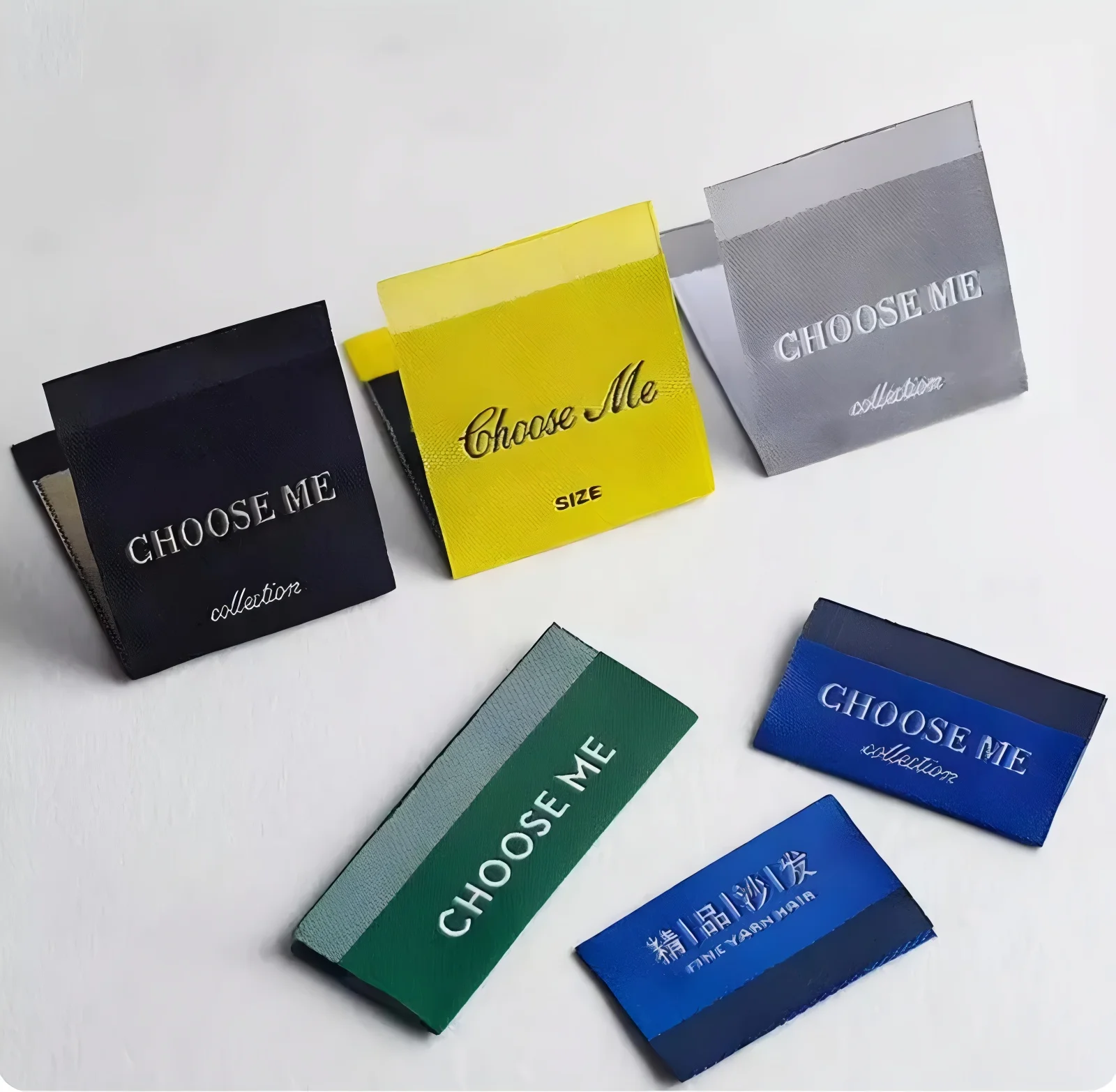
9. Keeping your yarn-dyed items looking good
The good news is that yarn-dyed items are made for lasting color! Generally, caring for them is similar to how you’d care for other quality fabrics of the same type (like cotton, wool, or polyester).
- Always check the care label: This is the most important tip. The care label on the garment or item itself will have specific washing and drying instructions tailored to that product.
- Use a mild soap or detergent.
- It’s often a good idea to wash with similar colors, just as a general precaution, though the risk of color bleeding with quality yarn-dyed items is low.
- Avoid using strong bleach, like chlorine bleach, unless the care label specifically says it’s okay.
Explore more:
Knowing about “yarn-dyed” helps you in a couple of ways. As a consumer, it helps you choose better quality clothes and home items that will look great for longer. For businesses and brand owners, understanding this process helps you select impactful branding materials, like high-quality woven labels from Packlove.
When your label’s quality reflects your brand’s overall quality, it makes a strong, positive impression. Packlove is here to help you with yarn-dyed branding solutions that make your products stand out and tell a story of quality and attention to detail.






















